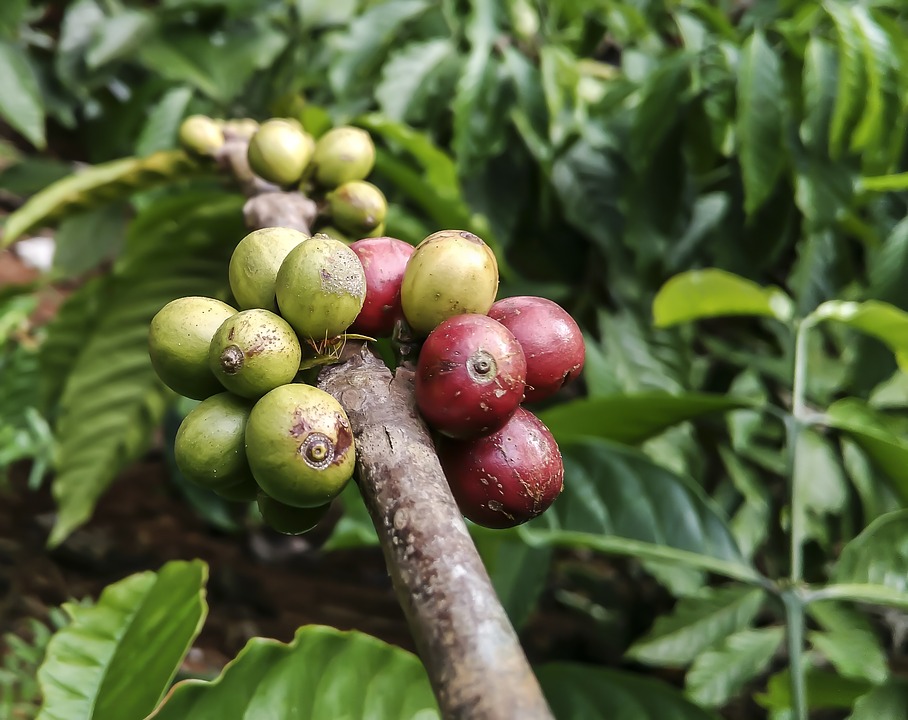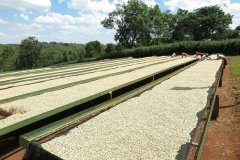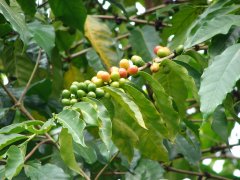Understanding of the extraction Theory of Coffee Gold Cup roasting such as stir-frying and brewing coffee
For professional baristas, please follow the coffee workshop (Wechat official account cafe_style)
Some guests ordered coffee and stressed the need for "strong flavor". In the age of instant coffee, if one teaspoon can adjust the standard weight of a cup; to be strong, use two teaspoons. The so-called shade reflects the monotonous taste of coffee in the past, just like a black-and-white TV, which can be adjusted only by light and contrast.
Advocate? Brewing craft, pay attention to the regional style of boutique coffee, is three-dimensional and balanced. Baristas can fine-tune or highlight the style of coffee beans in different ways according to the characteristics of coffee beans, but if they want to change to a color like a color TV, it is bound to affect the look and feel of the whole picture.
"if you cook it well, isn't it thick? "
"if you cook it well, isn't it thick? Those who give this suggestion probably think that brewing coffee is like making chicken soup, and the longer it takes, the more flavorful it will be. How much of a cup of brown coffee comes from coffee beans? And a bean, how much can it dissolve in the cup?
In fact, water accounts for more than 98% of each drop of coffee. The American Fine Coffee Association used to quantify the concentration of total dissolved solids (TDS, total dissolved solids) measured by an optical refractometer. If less than 1% of a cup of coffee comes from beans, our taste will be considered too light. On the contrary, if the content is higher than 2%, it will generally feel too strong. The differences between nationality and taste are reflected in the concentration standards of different boutique associations. In the United States, it is between 1.2% and 1.4%; Nordic people have a heavier taste and prefer a concentration of between 1.3% and 1.5%.

Completely "taste" with rust and bitterness
If you want chicken soup to taste, you can chop the meat into pieces to increase its surface area. The reason for grinding coffee into baby powder is actually the same. The meat in the soup is tasteless to chew because the taste is completely dissolved in the soup. But what if the extracted coffee powder is put into the mouth, or again? In a bubble, you will find that the coffee is not only light, but also with a little metal rust. This is the difference between extraction and soup: completely flavored coffee is not good!
Delicious extraction ratio 18 to 22%
For each coffee bean, 30% of the ingredients are available for extraction, and the rest are not water soluble. Statistics conducted in the United States in the 1960s showed that the extraction ratio (brew ratio) of the most delicious coffee was between 18% and 22%. If you take out the rest, the coffee will be as bitter as rust and become overextracted (over-extraction). ? The purpose of making fine coffee is to meet the golden cup standard (Gold Cup) composed of the above two indexes by combining the factors such as water temperature, ratio of water to coffee, coarse grinding and extraction time.
Appreciate the boutique coffee, including feeling its aroma, taste, texture, tail rhyme, as well as the balance of sour, bitter and sweet. Each of the above items will change with the temperature, and will also be due to? The gesture of the cook is different. These are the hands? The beauty of cooking: the same type of coffee, the same concentration, the taste can be thousands of miles apart!
Patrick Tam / tr. by Phil Newell)
Important Notice :
前街咖啡 FrontStreet Coffee has moved to new addredd:
FrontStreet Coffee Address: 315,Donghua East Road,GuangZhou
Tel:020 38364473
- Prev

Do you want to leave the ultimate meaning of sour coffee baking when baking coffee?
Professional barista communication please follow the coffee workshop (Wechat official account cafe_style) since childhood to drink coffee in the restaurant, no matter what the price, grade of coffee, it must be a little bitter. Children have the most frank taste buds and are mostly resistant to coffee. This is actually the nature of animals (innately aversive); many poisons in nature, including caffeine, are bitter.
- Next

Coffee Roasting Basics and Perfection-Coffee's Flawed Beans
Professional barista communication, please pay attention to coffee workshop (Weixin Official Accounts cafe_style) This slogan comes from white rice advertisements many years ago. At that time to buy rice, unlike today's supermarket to see, each package of equal weight, white grain. Rice shops are usually named after the number. Besides rice, he also sells oil, salt, fermented bean curd, and a colorful cat that catches mice for the boss. The rice was not pre-planned at that time.
Related
- Beginners will see the "Coffee pull flower" guide!
- What is the difference between ice blog purified milk and ordinary milk coffee?
- Why is the Philippines the largest producer of crops in Liberia?
- For coffee extraction, should the fine powder be retained?
- How does extracted espresso fill pressed powder? How much strength does it take to press the powder?
- How to make jasmine cold extract coffee? Is the jasmine + latte good?
- Will this little toy really make the coffee taste better? How does Lily Drip affect coffee extraction?
- Will the action of slapping the filter cup also affect coffee extraction?
- What's the difference between powder-to-water ratio and powder-to-liquid ratio?
- What is the Ethiopian local species? What does it have to do with Heirloom native species?

